
Components
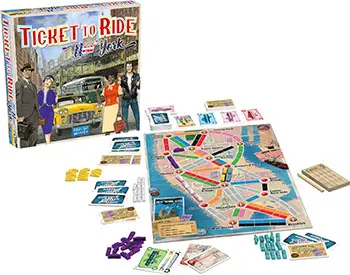
- 1 board map of New York transportation network
- 60 plastic Taxis (15 in each color)
- A few spare plastic Taxis in each color
- 44 Transportation cards
- 18 Destination Ticket cards
- 1 scorepad
- 1 pencil
- Instructions
Object of the Came
At the end of the game, the player who scored the most points wins. You score points by:
Claiming a Route between two adjacent Locations on the board;
Successfully completing a Continuous Path of Routes between the two Locations listed on your Destination Ticket(s);
Connecting Tourist Attractions.
You also lose points for each of your Destination Ticket cards you do not complete by the end of the game.
Setup
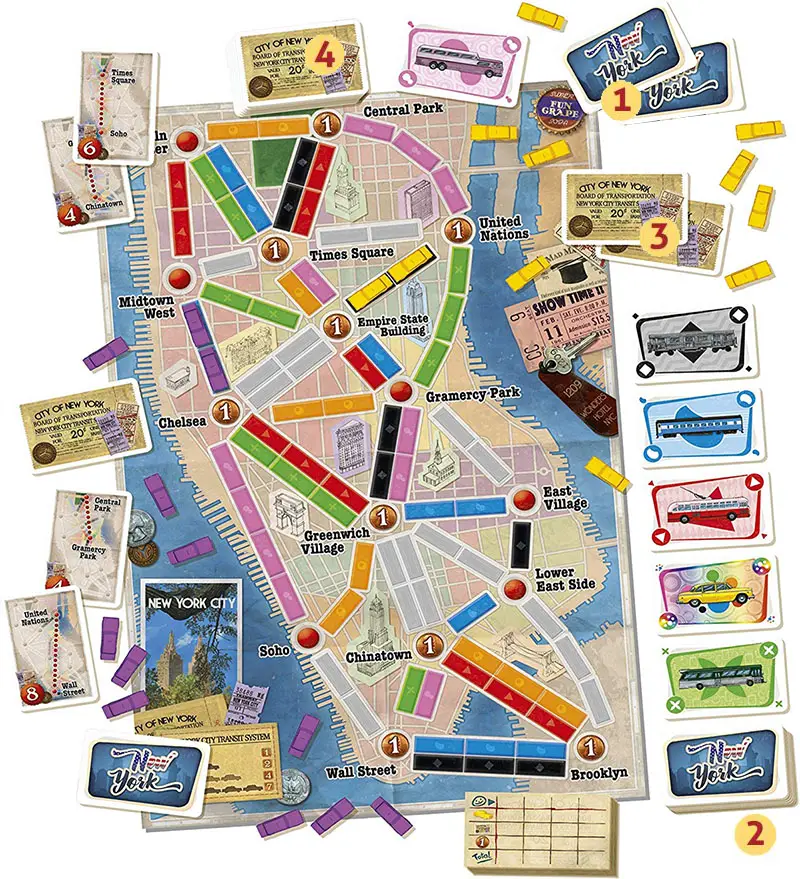
Place the board map in the center of the table. Each player takes a set of colored plastic Taxis.
Shuffle the Transportation cards and deal a starting hand of two cards to each player 1. Place the remaining deck of Transportation cards near the board and flip the top five cards from the deck face up 2.
If by doing so, three of the five face up cards are Taxi cards, immediately discard all five cards and fl ip five new cards face up to replace them.
Shuffle the Destination Ticket cards and deal two cards to each player 3. Each player must look at their Destination Ticket cards and decide which ones they wish to keep.
Each player must keep one or both cards. If they choose to keep only one, the returned card is placed on the bottom of the Destination Ticket deck. Then place this deck next to the board 4.
Players must keep their Destination Ticket cards secret until the end of the game.
You are now ready to begin.
Game Play
Starting with the youngest player and proceeding in clockwise order, players take turns until the game ends. On your turn, you must do one (and only one) of the following three actions:
- Draw Transportation cards
- Claim a Route
- Draw Destination Ticket cards.
1. Draw Transportation Cards
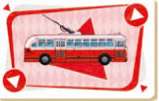
Transportation cards match the Route colors on the board (blue, green, black, pink, red, orange) except for Taxi cards which are multicolored and act as wild cards (they can replace any card when claiming a Route).
You may have any number of Transportation cards in your hand at any time.
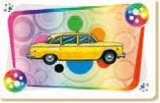
This action allows you to draw two Transportation cards. You may take the top card from the deck (a blind draw) or take any one of the five face up cards. In this case, immediately replace
it with the top card of the deck.
As an exception, if you take a face up Taxi card as your first card, you cannot take another card on that turn. You cannot take a face up Taxi card as your second card either.
If, at any time, three of the five face up cards are Taxi cards, immediately discard all five cards and flip five new cards from the deck face up to replace them.
When the deck is empty, shuffle the discarded cards to create a new Transportation cards deck.
2. Claim a Route
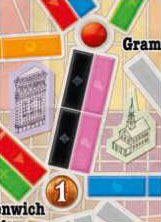
A Route is a set of spaces of the same color on the board that links two adjacent Locations.
Some locations are connected by Double Routes (two Routes of the same length connecting the same Locations). A single player cannot claim both Routes of a Double Route.
Note: In two-player games, once one Route of a Double Route is claimed, the other one cannot be claimed by the other player.
To claim a Route, you must discard a number of cards from your hand equal to the number of spaces of this Route and place a plastic Taxi on each of those spaces. Most Routes require a specific set of cards. For example, a blue route must be claimed by discarding blue Transportation cards.
The gray Routes, on the other hand, can be claimed with a set of cards of any one color.
You can claim any open route on the board, even if it is not connected to a Route you previously claimed. You cannot claim more than one Route per turn.
If you do not have enough plastic Taxis left to place one on each space of a given Route, you cannot claim that Route.
You can claim a blue Route that is three spaces long by discarding any of the following sets of cards:
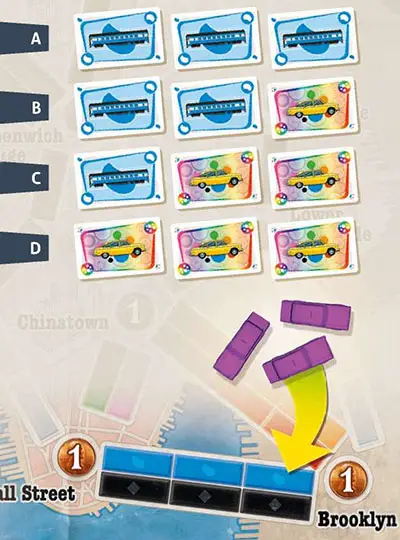
3. Draw Destination Ticket Cards
Each Destination Ticket card shows two locations and a point value. At the end of the game, you score the point value of each Destination Ticket card you completed.
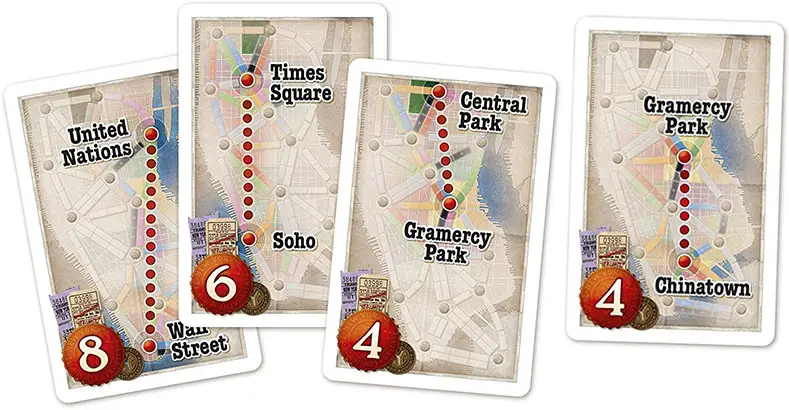
To complete a Destination Ticket card, you must connect the two locations listed on the card by creating a continuous path of Routes you claimed. If you cannot, you will lose that many points. You may have any number of Destination Ticket cards.
This action allows you to draw more Destination Ticket cards. To do so, draw two cards from the top of the Destination Ticket cards deck. You must keep at least one of those cards, but may keep both of them if you want.
Any returned cards are placed at the bottom of the Destination Ticket cards deck. You cannot discard a Destination Ticket card once you have chosen to keep it.
If there is only one Destination Ticket card left in the deck, you can still do this action but must keep the card.
Destination Ticket cards and their completion must be kept secret from other players until the end of the game.
End of the Game
When a player has two or fewer plastic Taxis left in their supply, each player-including that player-gets one last turn. Then the game ends and players calculate their final scores using the scorepad:
First, each player scores points for each Route they claimed during the game based on the Route Scoring Table printed on the board.
Then, each player reveals all their Destination Ticket cards, adds the value of each card they completed, and subtracts the value of any card they failed to complete.
 Finally, each player scores one point for each Tourist Attraction that is connected to one or more of the Routes they claimed.
Finally, each player scores one point for each Tourist Attraction that is connected to one or more of the Routes they claimed.
The player with the most points wins the game.
In case of a tie, the tied player who completed the most Destination Ticket cards wins. If players are still tied, they happily share the victory.
Other Ticket to Ride Games
Continue Reading


